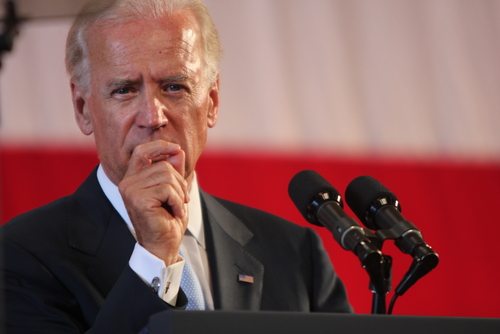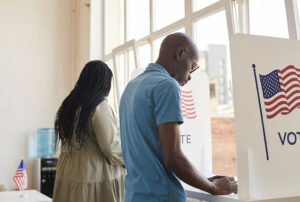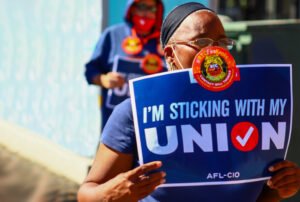
Jason and Bonnie Grower / Shutterstock.com
July 22, 2014;TIME
President Barack Obama’s assignment last February to Vice President Joe Biden to identify “job-driven” workforce development and training programs that would be “more effective, more responsive to employers, and more accountable for results” is coming to fruition. The president was scheduled Tuesday to sign the Workforce Innovation Opportunity Act (WIOA) and the Vice President to release the results of his analysis. NPQ will issue a breakdown of what’s in and what’s out of the WIOA separately, but this newswire focuses on the Biden report.
Sign up for our free newsletters
Subscribe to NPQ's newsletters to have our top stories delivered directly to your inbox.
By signing up, you agree to our privacy policy and terms of use, and to receive messages from NPQ and our partners.
Biden’s analysis may be a little late, since the new legislation passed earlier this month actually eliminates 15 federal workforce training programs deemed not to work and provides new flexibility in the workforce development system for program sponsors and employers. Nonetheless, his report can go beyond the bipartisan legislation to shake up a system of workforce development programs that have been subjected to criticism from many quarters for absorbing significant government funds without generating commensurate job placement.
At the time that President Obama gave Biden his assignment, we suggested that the report could be compiled by asking nonprofits themselves what works best. The results of the vice president’s report, titled Ready to Work: Job-Driven Training and American Opportunity, reads like a catalogue of the successes of the nonprofit sector. A number of the models cited in the report have significant participation from institutional philanthropy:
- The report touts the Los Angeles Career Academies, a program of the Los Angeles Unified School District, supported by grant funds from the Irvine Foundation and the United Way of Greater Los Angeles, to focus on health care, biotechnology, and other technology-related industries.
- The collaboration of the Rockefeller Foundation and Deloitte to “address the challenges of the long-term unemployed” earns plaudits from the vice president, notably their effort to “create playbooks that can be used by employers and long-term unemployed job seekers to return a greater number of job seekers to the workforce.” The employer playbooks will help employers “operationalize the Best Practices and tap into the full potential of the long-term unemployed population.”
- Another workbook, an “online playbook of core principles and materials that organizations in locations around the country can use in implementing a demand-driven model,” developed by Skills for Chicagoland’s Future and supported by the Aspen Institute’s Skills for America’s Future, draws the vice president’s approval and recommendation.
- Getting special mention is the Wadhwani Foundation, a foundation based in India, and its “Race to a Job” initiative, launched in 2012, to “enhance student employability while reducing learning times and costs and improving completion.” Wadhwani’s two pilot projects are at Anne Arundel Community College in Maryland, boosting the college’s cyber technology certificate program, and at the Borough of Manhattan community College of the City of New York, in conjunction with local 1199 of the Service Employees International Union, to digitize the school’s medical assistant specialist curriculum.
- The SEIU receives more recognition for its NW Training Partnership in the state of Washington which “trains 40,000 students each year in Washington, making it the largest home care workforce training provider in the nation.” It also offers a registered apprenticeship program for home care aides. The program is slated for a lessons-learned study by the Aspen Institute, with funding support from the Ford Foundation.
All of these foundation-related programs deserve congratulations for making it into the vice president’s scan of effective workforce training efforts. While the report identifies touchstones for effective programs, including such common-sense ideas as “work up-front with employers,” “offer work-based learning opportunities with employers,” “make better use of data to drive accountability,” “measure and evaluate employment and earnings outcomes,” “provide a seamless progression from one educational stepping stone to another,” “create regional collaborations,” and “break down barriers to accessing job-driven training and hiring for any American who is willing and able to work,” something is still missing.
Perhaps the vice president couldn’t have done it for political reasons, but the report doesn’t identify the programs in the Department of Labor and other federal programs that have not worked, have not followed these principles, and have repeatedly thrown good money after bad as a result. Those nonprofits that know the field and know what works ought to be vigorous in identifying those programs that have been unfortunately unproductive and continue to be so. Otherwise, through the inertia of public policy, with the exception of the programs that will be trimmed by the WIOA, funding will inexorably keep those failing programs alive, especially as members of Congress advocate for constituents that have been receiving those grants in the past. Even the programs cut in the text of the WIOA may find ways to rename and reinvent themselves for access to federal dollars whether or not their techniques and approaches really change.—Rick Cohen












